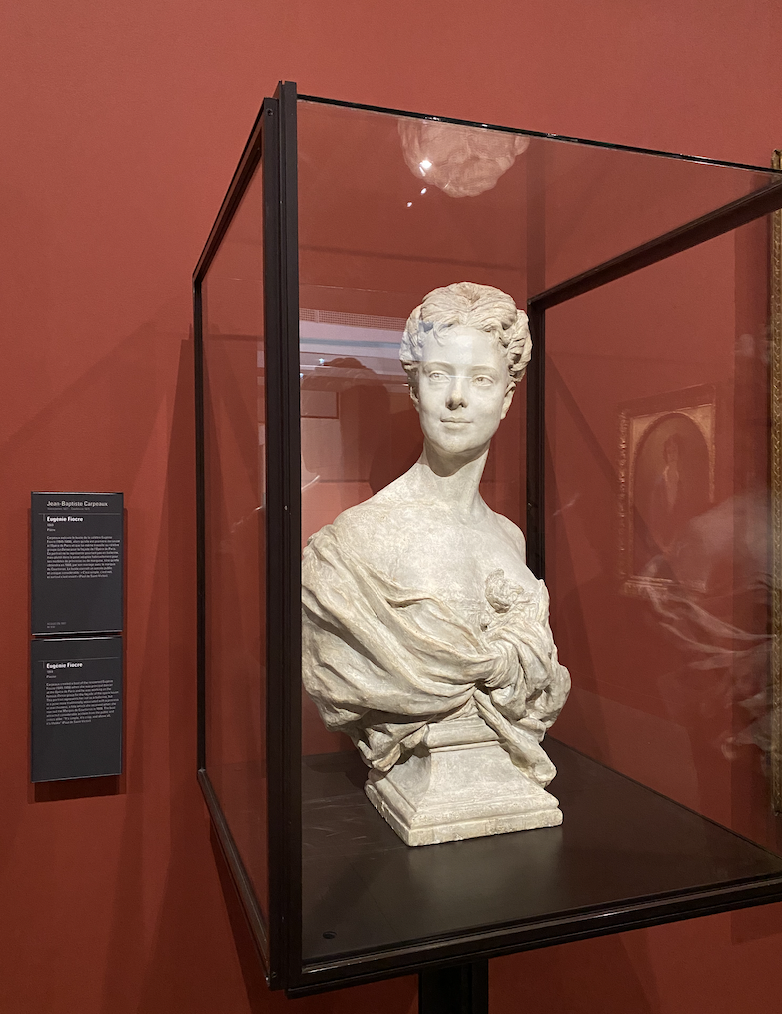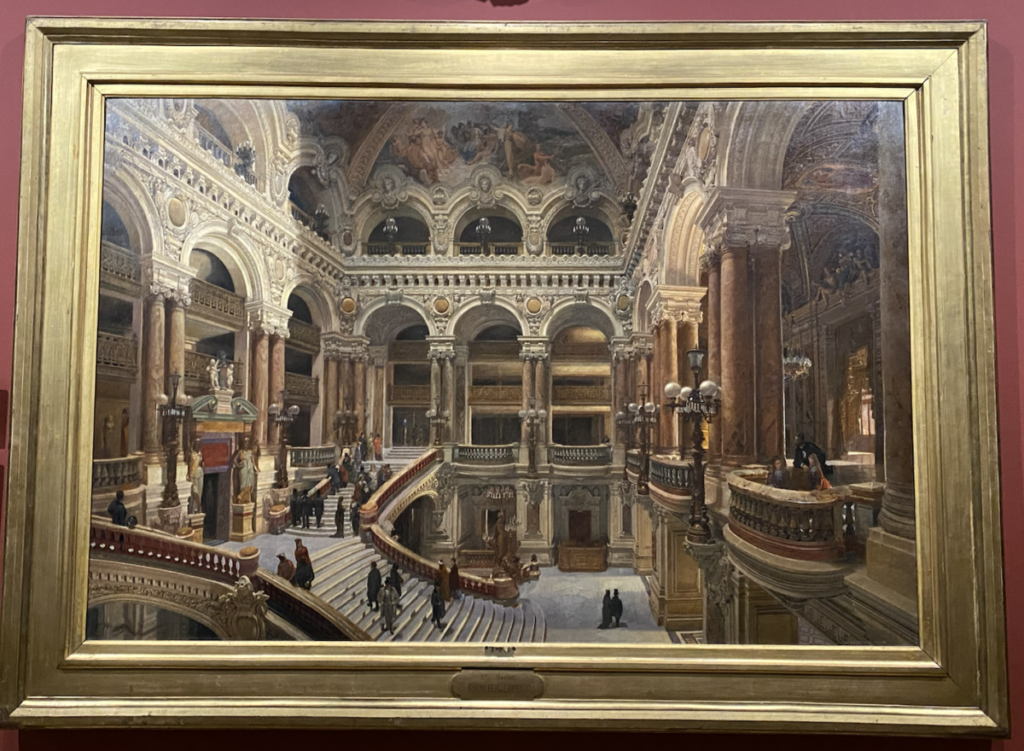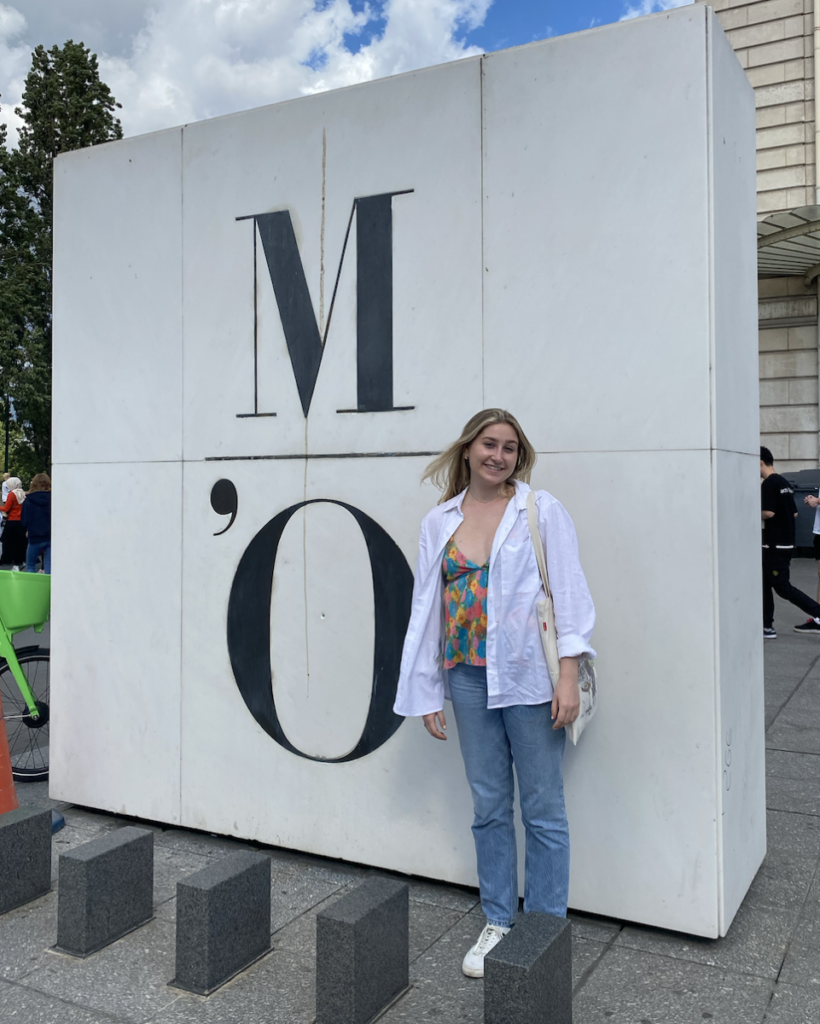
Even though this was our two paper week, Zoe and I still found time to visit the Musee d’Orsay on Wednesday afternoon. It’s about a 15 minute walk along the Seine from our apartment, and we stopped at the Bouquinistes, or booksellers, on our way for some posters and trinkets. We’re going to have to go back again this week because we only got through the first two floors, which focused a lot on the architecture of Paris and also featured many sculptures. On my unofficial quest to incorporate dance into every blog post, I found a bust of Eugenie Fiocre by Jean-Baptiste Carpeaux from 1863. I was initially drawn to the bust because of its intricacies in the details of the fabric and hair, but with the help of my trusty google translate app, I realized Eugenie Fiocre was a principal dancer with the Paris Opera Ballet. She was the first to dance many of the principal roles in ballets the company still performs today and is even depicted in a Degas painting. She was definitely a huge celebrity in France in the late 1800s, which was a really interesting concept to think about. From what I’ve seen around Paris thus far, only very powerful people like politicians or war heroes have had busts of themselves made, so it was cool to see a famous dancer also be immortalized in this way.

This got me thinking about the persistence of the idea of fame and celebrity throughout history. I wondered what it is about humans that makes us become so invested in the lives of people we don’t know. There has been research investigating what makes some people more prone to “celebrity worship” than others (McCutcheon et al. 2002). In some cases, people can become so invested in the lives of their favorite celebrities that they become addicted to feeling a personal connection with that person. The Celebrity Worship Scale, created by McCutcheon, Lange, and Houran, laid the groundwork for a study by Sansone et al. in 2014. They identified celebrity worship as a continuum ranging from enjoying watching and reading about a celebrity to showing excessive empathy and obsessive behavior toward a celebrity (Sansone et al. 2014). These studies show how the idea of celebrity in human culture has had an impact on clinical psychiatry, which I had not thought about before. From even before Eugenie Fiocre to the Kardashians today, humans have been fascinated by fame for many years, not without implications on the brain.

References:
McCutcheon, L. E., Lange, R., & Houran, J. (2002). Conceptualization and measurement of celebrity worship. British journal of psychology (London, England : 1953), 93(Pt 1), 67–87.
Sansone, R. A., & Sansone, L. A. (2014). “I’m Your Number One Fan”- A Clinical Look at Celebrity Worship. Innovations in clinical neuroscience, 11(1-2), 39–43.
